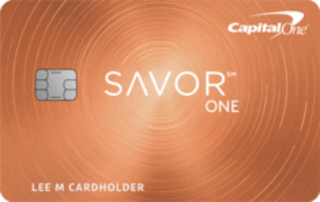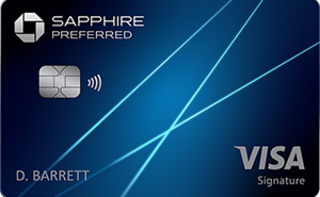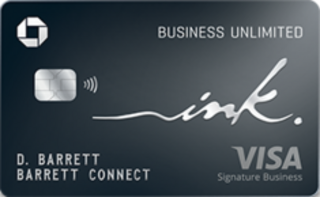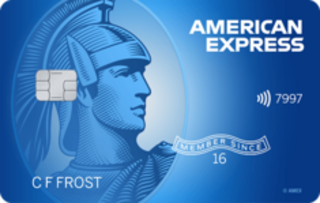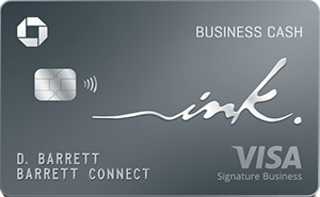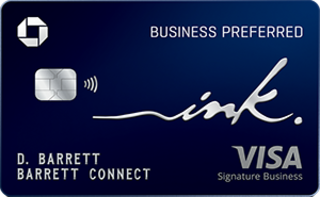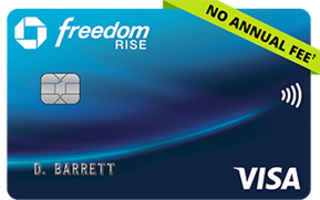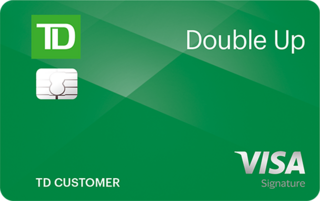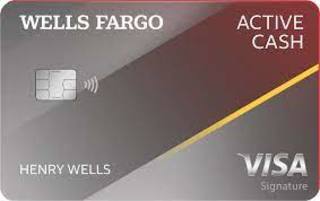17 Best Credit Cards of April 2024
Best Credit Cards Main Takeaways
- Credit cards can provide numerous benefits, including cash back, miles, points, insurance policies and extended warranties.
- Money has evaluated hundreds of cards to find the best of the best in each category.
- Our top picks include cards with no or low annual fees that can reward your everyday purchases whether it's on groceries, gas or travel.
Why Trust Us?
Our editorial team has spent well over a thousand hours analyzing, evaluating and comparing the top credit card offers in the market. We carefully vet each card’s fine print in order to understand their features, limitations and potential benefits for consumers.
We review cards independently, ensuring our content is accurate and guided by editorial integrity. Read our full methodology to learn more.
- 100+ credit cards evaluated
- 10+ data points used, including ongoing fees, reward programs and welcome offers
- 200+ sources reviewed
Money.com has partnered with CardRatings.com for our coverage of credit card products. Money and CardRatings may receive a commission from card issuers. This site does not include all card companies or all available card offers. Our top picks are listed in alphabetical order.
Our Top Picks for the Best Credit Cards of April 2024
Best No-Annual-Fee Credit Cards
- Blue Cash Everyday® Card from American Express — Best No-Annual-Fee Card for Everyday Expenses
- Capital One SavorOne Cash Rewards Credit Card — Best No-Annual-Fee Credit Card for Dining and Traveling
- Chase Freedom Unlimited® — Best No-Annual-Fee Credit Card for Insurance Coverage and Bonus Categories
- Ink Business Cash® Credit Card — Best No-Annual-Fee Credit Card for Business Expenses
Best Low-Annual-Fee Credit Cards
- Blue Cash Preferred® Card from American Express — Best Low-Annual-Fee Card for Groceries and Gas
- Chase Sapphire Preferred® Card — Best Low-Annual-Fee Credit Card for Travel
- Ink Business Preferred® Credit Card — Best Low-Annual-Fee Credit Card for Business Expenses
Best Premium Credit Cards
- American Express® Gold Card — Best Premium Card for Foodies
- Chase Sapphire Reserve® — Best Premium Card for Travel
- The Platinum Card® from American Express — Best Card for Luxury Perks
Best Credit Cards for Beginners
- Bank of America® Customized Cash Rewards Secured Credit Card — Best Secured Credit Card for Rewards
- Chase Freedom Rise℠ — Best Beginner Credit Card for Credit Limit Increases
- Discover it® Secured Credit Card — Best Secured Credit Card for Quick Upgrade
Best Flat-Rate Cash Back Credit Cards
- Alliant Cashback Visa® Signature Credit Card — Highest Flat-Rate Cash Back Credit Card
- Citi Double Cash® Card — Most Reliable Flat-Rate Cash Back Credit Card
- TD Double Up℠ Credit Card — Best Flat-Rate Cash Back Credit Card for Insurance Coverage
- Wells Fargo Active Cash® Card — Generous Introductory Offers Among Flat-Rate Cash Back Credit Cards
Best Credit Cards Reviews
The cards in our top picks are listed in alphabetical order.
Best No-Annual-Fee Credit Cards
- 3% cash back at U.S. supermarkets up to the first $6,000 spent each year on eligible purchases, then 1%
- Purchase protection* included
- 3% cash back on gas at U.S. gas stations up to the first $6,000 spent each year on eligible purchases, then 1%
- No annual fee
- No travel insurance
- $6,000 threshold for the highest reward rate could be too low for some
- Welcome offer:
- bonus_miles_full
- Insurance and protection:
- Purchase protection
Terms apply. Click here for applicable rates and fees.
Intro APR: intro_apr_rate,intro_apr_duration and balance_transfer_intro_apr,balance_transfer_intro_duration│ Regular APR: reg_apr,reg_apr_type │Annual fee: annual_fees
Why we chose it: The Blue Cash Everyday® Card from American Express from American Express offers high cash back rates at U.S. supermarkets and gas stations, two of the largest household expenses.
This no-annual-fee card by American Express® is a great option if you’re looking to save on groceries, gas and everyday purchases. It offers 3% at U.S. supermarkets, U.S. gas stations and online purchases from U.S. retailers up to the first $6,000 in each of the categories, 1% thereafter. (Terms apply.)
Not only does it offer high cash back in these popular categories, but it also offers statement credits for the Disney+ Bundle on up to $84 a year as 12 statement credits (if you’re paying over $9.99 a month for the bundle with your card) and Home Chef ($15 a month for up to $180 a year in statement credits). Terms apply, both subscriptions are subject to auto-renewal.
- 3% back on dining and entertainment
- Up to 8% cash back on entertainment when buying through Capital One Entertainment
- No foreign transaction fee
- Not as much insurance coverage as some direct competitors
- New cardmember offer:
- bonus_miles_full
- Insurance and protection:
- Extended warranty and travel accident insurance
Intro APR: intro_apr_rate,intro_apr_duration and balance_transfer_intro_apr,balance_transfer_intro_duration│ Regular APR: reg_apr,reg_apr_type │Annual fee: annual_fees
Why we chose it: The Capital One SavorOne Cash Rewards Credit Card offers high rates of cash back on dining and entertainment, along with travel accident insurance and no foreign transaction fees.
While its 3% cash-back rewards on dining is about equal to some competitors, its 3% back on theaters, concerts and sporting events make the Capital One SavorOne the perfect card for a night out.
It’s a great card for travel as well, offering 5% on hotels and rental cars through Capital One Travel and travel accident insurance. Also, it doesn’t charge foreign transaction fees, making it a worthy companion on international trips. On the con side, however, it lacks the comprehensive insurance coverage that some similar cards offer.
- 5% on travel purchases made through Chase Travel℠
- No cap on rewards
- Wide array of protection and insurance policies
- 3% foreign transaction fee
- New cardmember offer:
- bonus_miles_full
- Insurance and protection:
- Purchase protection, extended warranty, trip cancellation/interruption insurance, auto rental collision damage waiver
Intro APR: intro_apr_rate,intro_apr_duration and balance_transfer_intro_apr,balance_transfer_intro_duration│ Regular APR: reg_apr,reg_apr_type │Annual fee: annual_fees
Why we chose it: Among no-annual-fee credit cards, the card_name offers some of the highest cash back rates and the most insurance coverage.
The Chase Freedom Unlimited® provides unlimited 1.5% on purchases, plus 5% on travel through Chase Travel℠, 3% on dining and 3% on drugstore purchases. Cardholders also receive frequent offers through the Chase Ultimate Rewards® portal, such as increased cash back at specific retailers, all the way up to 20% sometimes.
It also offers significant insurance coverage, including purchase protection, extended warranty, trip cancellation/interruption insurance and auto collision damage waiver.
Unfortunately, it does charge a 3% foreign transaction fee, so while the card provides great travel-related benefits, it won’t be a good choice for international travel.
- 5% back on select business categories on the first $25,000 spent each year, 1% thereafter
- Purchase protection and extended warranty on qualifying purchases
- Cap on 5% and 2% categories could be too low for some businesses
- 3% foreign transaction fee
- New cardmember offer:
- bonus_miles_full
- Insurance and protection:
- Purchase protection, extended warranty and auto rental collision damage waiver
Intro APR: intro_apr_rate,intro_apr_duration│ Regular APR: reg_apr,reg_apr_type │Annual fee: annual_fees
Why we chose it: The Ink Business Cash® Credit Card takes its business name seriously, offering rewards on important categories such as office supplies and internet services.
For small businesses, the Ink Business Cash® Credit Card offers arguably the most value of any card in the market with 5% cash back on certain business-related expenses, including office supplies, as well as internet and phone services (up to the first $25,000 combined, 1% thereafter). It also offers 2% on restaurants and gas up to the first $25,000 too, 1% after that.
The card includes solid insurance coverage as well, including purchase protection, extended warranty and secondary rental insurance.
Unfortunately, it does charge a foreign transaction fee, so if your business takes you out of the U.S., it might not be the best option.
Best Low-Annual-Fee Credit Cards
- 6% back at U.S. supermarkets, up to $6,000 per year, 1% thereafter
- 3% back on gas at U.S. gas stations and eligible transit expenses
- Secondary rental insurance**, purchase protection and extended warranty*
- annual_fees
- A $6,000 max on highest reward rates might be too low for some
Terms apply. Click here for rates and fees.
- Welcome offer
- bonus_miles_full
- Insurance and protection
- Return protection, rental car insurance, extended warranty and purchase protection*
Intro APR: intro_apr_rate,intro_apr_duration and balance_transfer_intro_apr,balance_transfer_intro_duration │ Regular APR: reg_apr,reg_apr_type │Annual fee: annual_fees
Why we chose it: The card_name is an excellent option for families trying to get the most out of everyday spending, thanks to excellent cash-back rewards on food and transportation.
The Blue Cash Preferred® Card from American Express gives back an unmatched 6% — more than double what most cards offer — on purchases at U.S. supermarkets (up to the first $6,000 spent, 1% thereafter) and eligible streaming subscriptions, including Netflix, Hulu and Disney+. (Terms apply. Streaming services require enrollment and are subject to auto-renewal.)
The card also offers 3% cash back on gas purchases in the U.S. and other expenses in the transit category, such as tolls, parking, taxis, trains and more. Essentially, whatever your means of transportation, you’re going to earn rewards. On other purchases, cardholders will get 1% cash back. (Terms apply.)
While it does have an annual fee, this card’s cash-back rate is high enough to make up for it. Of course, it’s important to make sure the $95 annual fee is worth it for your particular situation. For example, if you’re a single person who rarely buys groceries, then you probably won’t get as much value from this card as a prolific cook or a family of four.
- Includes trip cancellation/interruption insurance and trip delay reimbursement
- Points are worth 25% more when redeemed for travel through Chase Travel
- Auto rental collision waiver is primary coverage
- No statement credit for Global Entry or TSA PreCheck®
- New cardmember offer
- bonus_miles_full
- Insurance and protection
- Trip cancellation/interruption insurance, auto rental collision damage waiver, baggage delay insurance, trip delay reimbursement, purchase protection and extended warranty
Intro APR: intro_apr_rate,intro_apr_duration│ Regular APR: reg_apr,reg_apr_type │Annual fee: annual_fees
Why we chose it: The Chase Sapphire Preferred® Card offers excellent insurance coverage and a wide variety of travel rewards categories for a low annual fee of $95.
When it comes to travel, the Chase Sapphire Preferred® Card covers a lot of bases. First, it offers 5x points on travel purchased through Chase Travel, and when those points are redeemed for travel through the same portal, they’re worth 25% more. This means that if you have $1,000 in points for a flight ticket, you technically have $1,250.
Cardholders can also earn up to $50 in statement credits for hotel purchases made through Chase Travel and, on each account anniversary, a point bonus equaling 10% of what you spent throughout the year.
One of the card’s main highlights is the insurance coverage it offers travelers. There’s flight cancellation and interruption insurance, as well as trip delay reimbursement and baggage delay insurance. Even more noteworthy, it offers primary rental insurance, which covers up to the cash value of the car.
When it comes to day-to-day spending, you can earn 3x points on dining, online grocery stores (excluding Target®, Walmart® and wholesale clubs) and select streaming services, which makes it much easier to rack up points to use for travel.
- 3x points on eligible business-related purchases on the first combined $150,000 spent each year (1x point thereafter)
- 25% additional point value when redeeming for travel through Chase Travel
- Low annual_fees annual fee
- No annual statement credits
- $150,000 cap is low for large businesses
- New cardmember offer:
- bonus_miles_full
- Insurance and protection:
- Trip cancellation and interruption insurance, rental collision waiver, cell phone protection, purchase protection and extended warranty
Intro APR: intro_apr_rate,intro_apr_duration│ Regular APR: reg_apr,reg_apr_type │Annual fee: annual_fees
Why we chose it: The Ink Business Preferred® Credit Card has a low annual fee but offers high rewards in business-related categories, making it a perfect choice for small businesses.
The Ink Business Preferred® Credit Card provides a great way for business owners to get something back for those operating expenses. It has a low annual fee of $95, yet it delivers a long list of bonus rewards.
Cardholders get 3X points for every dollar (on up to the first $150,000 spent each anniversary year) on combined purchases related to shipping, online advertising, internet and phone bills and travel. Also, when you redeem your points for travel through Chase Travel℠, points are worth 1.25X, meaning 100 points are actually $1.25 instead of just $1.
Other than the rewards and redemption bonuses, the Ink Business Preferred® Credit Card offers many great travel perks. There are no foreign transaction fees, and it includes trip cancellation insurance and rental car collision insurance.
While this Chase card is not the most jam-packed with bonus rewards and perks, its straightforward points system and an annual fee that’s much lower than competitors make it an excellent choice for small business owners.
Best Premium Credit Cards
- 4X Membership Rewards® Points at restaurants worldwide, plus eligible takeout and delivery in the U.S.
- 3X Membership Rewards® Points on flights booked directly with airlines or through amextravel.com
- No foreign transaction fee
- annual_fees annual fee
- Supermarkets category doesn't include superstores or warehouses
Terms apply. Click here for rates and fees.
- Welcome offer
- bonus_miles_full
- Insurance and protection
- Trip delay insurance, baggage insurance, rental car insurance, extended warranty and purchase protection*
Intro APR: intro_apr_rate,intro_apr_duration│ Regular APR: reg_apr,reg_apr_type │Annual fee: annual_fees
Why we chose it: If you want to be rewarded for eating, this is the card. The American Express® Gold Card offers generous rewards on dining purchases in all categories, from restaurants to groceries and even Uber Eats. (Terms apply.)
When it comes to food, few cards cover all the bases. However, the American Express® Gold Card has high rewards for purchases at restaurants, supermarkets and delivery services: whether you go out or stay in, you’ll get 4x Membership Rewards® Points on just about every food-related purchase you make. Although the special rewards for delivery and takeout services are limited to the U.S., the benefit applies to sit-in restaurants worldwide. (Terms apply).
You can also qualify for monthly statement credits of up to $10 after dining at specific restaurants that partner with American Express®, including Shake Shack and The Cheesecake Factory (enrollment is required), as well as up to $120 a year in Uber Cash to spend on Uber and UberEats, split into $10 monthly statement credits, once you add the card to your Uber account.
Other than these dining rewards, the American Express® Gold Card gives you 3X Membership Rewards® Points on airline tickets booked through Amex Travel and 1X on other eligible purchases, along with classic American Express® benefits, such as baggage and rental car insurance, purchase protection and access to pre-sales on select events and preferred seating when applicable.
- $300 annual travel credit for travel purchases charged to your card each year
- 10x points on hotels and rental cars booked through Chase Travel (after the initial $300 spent on travel each year, which qualify for the annual statement credit)
- 5x points on flights purchased through Chase Travel
- 50% additional point redemption value when redeeming for travel on Chase Travel
- High annual_fees annual fee
- New cardmember offer
- bonus_miles_full
- Insurance and protection
- Trip cancellation and interruption insurance, rental collision waiver, lost luggage reimbursement, trip delay reimbursement, purchase protection, return protection, extended warranty
Intro APR: intro_apr_rate,intro_apr_duration│ Regular APR: reg_apr,reg_apr_type │Annual fee: annual_fees
Why we chose it: The Chase Sapphire Reserve® offers high rewards for most traveling expenses, and it goes a few steps further with travel-related coverage while charging a lower annual fee than its main competitor.
The Chase Sapphire Reserve® can ultimately make your travels much more comfortable and less expensive. Once you spend $300 in travel in a year (which qualifies for a statement credit), you'll get 5x points on airfare and a staggering 10x points on hotels and rental cars when booked through Chase Travel. You also get 3x on all restaurants, including eligible delivery services and takeout.
Points have 50% more value when redeemed through Chase Travel. So, if you’ve accrued 1,000 points (worth $10 in cash back), you’ll actually have the equivalent of 1,500 points ($15) if you use them to book flights through Chase.
Chase also offers a credit worth up to $100 every four years to reimburse you for TSA PreCheck®, NEXUS or Global Entry fees, a Priority Pass membership for airport lounge access and discounts on hotel stays in the IHG group, which includes Crowne Plaza and InterContinental properties.
There are a few limited-time memberships and perks with Chase partners as well, such as Lyft, Instacart and DoorDash. While this card offers a lot of benefits, its steep annual fee can be a deal-breaker for some. If that's the case, consider the Chase Sapphire Preferred® Card, which provides plenty of rewards for a very affordable annual fee.
- Generous luxury perks and insurance policies
- 5x Membership Rewards® Points on prepaid hotels booked through amextravel.com
- Hundreds of dollars in annual statement credits
- annual_fees annual fee is one of the highest in the market
- No 0% introductory APR period
Terms apply. Click here for rates and fees.
- Welcome offer
- bonus_miles_full
- Insurance and protection
- Cell-phone protection, return protection, trip cancellation and delay insurance, baggage insurance, rental car insurance, extended warranty and purchase protection*
Intro APR: intro_apr_rate,intro_apr_duration│ Regular APR: reg_apr,reg_apr_type │Annual fee: annual_fees
Why we chose it: The card’s long list of rewards and benefits is nearly unmatched, making its high annual fee a worthwhile investment for people who travel often and spend enough to get the most out of it.
In addition to giving 1X Membership Rewards® Point per dollar on regular purchases and 5X for every $1 spent on travel and hotels booked through American Express Travel, this metal card stands out for its wide array of statement credits and additional perks.
The Platinum Card® from American Express gives users a huge variety of statement credits. For example:
- Up to $20 back per month on eligible purchases made with your Platinum Card® on one or more of the following: Disney+, a Disney Bundle, ESPN+, Hulu, The New York Times, Peacock and The Wall Street Journal. (Enrollment required.)
- $12.95 per month for a Walmart+ membership (subject to auto-renewal) after you pay for Walmart+ each month with your Platinum Card®. (The statement credit will cover the $12.95 plus applicable local sales tax. Plus Up Benefits are excluded.)
- Up to $189 CLEAR® Plus membership (subject to auto-renewal) when you use your Platinum Card®. (Learn more.)
- $100 Global Entry credit every 4 years for your Global Entry application fee or up to $85 every 4.5 years for a TSA PreCheck® (through a TSA official enrollment provider) application fee, if you pay with your Platinum Card®.
- Terms apply
This is just to start as, in total, Platinum Card® cardholders could earn over $1,700 in statement credits alone. (Terms apply.)
However, the card also comes with some nice travel perks. You get access to American Express® airport lounges worldwide, special access to dinner reservations at high-end restaurants and premium benefits with select rental car companies such as complimentary enrollment in Avis Preferred Club.
Best Credit Cards for Beginners
- 3% cash back on the category of your choice
- 2% cash back on groceries and wholesale clubs like Sam's and Costco
- Users can deposit up to $5,000 to open initial credit line
- Foreign transaction fees
- Annual fee
- $0
- Insurance and protection
- Standard protection and coverage
Why we chose it: The Bank of America® Customized Cash Rewards Secured Credit Card offers more rewards and a higher spending limit than top competing secured cards, and its Visa network makes it more widely accepted as well.
This secured card by Bank of America® can help you build or repair your credit while offering plenty of rewards.
You can get the Bank of America® Customized Cash Rewards Secured Credit Card with a minimum security deposit of $200. Your credit limit is established based on the amount you deposit along with your income and credit score, if applicable. If you want to ensure a higher credit line (and can afford it), you can deposit up to $5,000, a higher maximum than competitors.
What truly stands out, however, are the rewards. Cardholders choose a category that earns them 3% back, and it can be changed monthly — choices include online shopping, dining, travel, drug stores, home improvement/furnishings, as well as gas and EV charging stations.
You also get 2% back on groceries and purchases at wholesale clubs such as Sam’s or Costco, and 1% on everything else.
Both the 3% and 2% spending categories have a combined $2,500 spending limit per quarter. After that, you’ll get 1% cash back. This is still more than other secured cards, which typically have limits below $1,000.
All information about the Bank of America® Customized Cash Rewards Secured Credit Card has been collected independently by Money.com.
- Possible credit limit increase after six months
- Includes trip cancellation insurance
- 1.5% cash back on all qualifying purchases
- 3% foreign transaction fee
- No bonus categories
- New cardmember offer:
- bonus_miles_full
- Insurance and protection:
- Purchase protection, extended warranty, trip cancellation/interruption insurance
Intro APR: intro_apr_rate,intro_apr_duration │ Regular APR: reg_apr,reg_apr_type │Annual fee: annual_fees
Why we chose it: The Chase Freedom Rise℠ offers good rewards, great insurance and can help raise your credit score through increasing your credit limit.
When beginning your credit journey, getting limit increases isn’t as easy, especially with a new card. You’d need more history, higher income or a record of high spending (and high paying back).
The Chase Freedom Rise℠, however, gives cardholders the opportunity to increase their limit after six months of simply paying their monthly bill on time and, therefore, improve their credit utilization ratio. Your credit utilization ratio measures how much credit you’re using (how much you owe) compared to your available credit. The lower your utilization ratio, the higher your credit score.
The card also offers 1.5% cash back on all eligible purchases, as well as significant insurance coverage, including trip cancellation/interruption insurance, purchase protection and extended warranty.
- Low $200 deposit minimum
- Cash back match doubles your first year rewards
- 2% on gas and dining (on the first $1,000 spent each quarter)
- $1,000 spending limit is low
- Annual fee:
- $0
- Insurance and protection:
- Standard fraud protection
Why we chose it: The Discover it® Secured Credit Card offers some of the best rewards among secured cards, as well as the opportunity for upgrading only seven months after account opening.
One of the most recommended secured cards out there, the Discover it® Secured Credit Card offers an excellent credit-building experience, with only seven months to get evaluated and upgrade to a regular card.
It also has great rewards for a secured card, offering 2% at restaurants and gas stations, and 1% on all other eligible purchases. Like other Discover cards, it also has a cash back match for the first year, which means the rewards you earned during that first year will double.
Keep in mind that the card requires a minimum $200 deposit and the credit limit will be equal to that deposit. Of course, it’ll get refunded when you upgrade given you’ve paid all your monthly bills on time.
All information about the Discover it® Secured Credit Card has been collected independently by Money.com.
Best Flat-Rate Cash Back Credit Cards
- Outstanding 2.5% flat rate cash back for qualifying customers
- No annual or foreign transaction fee
- 2.5% cash back has strict requirements to qualify
- No introductory offers
- Annual fee:
- $0
- Insurance and protection:
- Personal identity theft protection, travel accident insurance, rental collision waiver, purchase security and extended warranty
Why we chose it: Alliant’s 2.5% cash back is one of the highest flat rates in the industry, which makes it one of the best all-around cash-back cards out there.
Alliant offers one of the highest cash-back rates around: 2.5% on every purchase up to the first $10,000 spent per billing cycle. After that, it’s 1.5%, which is still higher than many competitors.
The catch, however, is that you must qualify as a Tier One customer to get the 2.5%. To qualify, cardholders must:
- Have an Alliant High-Rate Checking account
- Sign up to receive eStatements
- Receive at least one monthly electronic deposit
- Have a minimum average daily balance of $1,000 in the account
While this can seem like a lot of hoops to jump through, that 2.5% is high enough to make it worth the effort.
The card also includes some protective perks, such as travel accident and rental car collision insurance, extended warranties and reimbursement for identity theft recovery costs.
All information about the Alliant Cashback Visa® Signature Credit Card has been collected independently by Money.com.
- 2% cash back on all purchases
- Cash back is paid separately — 1% when you buy, one when you pay back the card
- Intro offers are rare
- Annual fee:
- $0
- Insurance and protection:
- Standard fraud protection
Why we chose it: The Citi Double Cash® Card is a flat-rate cash back staple that offers 2% on qualifying purchases.
The Citi® Double Cash Card is a hugely popular cash rewards credit card offering 2% flat rate cash back. Although it now works with points, the value is the same (one point is one cent), and it’s still recommended by experts, influencers and most financial publications.
Its main caveat is that points are divided: one when you make a purchase, the other one when you pay your credit card bill. It also lacks significant insurance coverage when compared to similar cash-back cards.
All information about the Citi Double Cash® Credit Card has been collected independently by Money.com.
- 2% cash back on all qualifying purchases
- Extended warranty, cell phone protection and purchase security
- Lost luggage reimbursement
- 3% foreign transaction fee
- No introductory APR on purchases
- In order to qualify, applicants must be residents of CT, DC, DE, FL, MA, MD, ME, NC, NH, NJ, NY, PA, RI, SC, VA or VT
- Welcome offer:
- bonus_miles_full
- Insurance and protection:
- Extended warranty, purchase protection, cell phone protection, lost luggage reimbursement
Intro APR: balance_transfer_intro_apr,balance_transfer_intro_duration│ Regular APR: reg_apr,reg_apr_type │Annual fee: annual_fees
Why we chose it: In addition to its high flat-rate cash back, the card_name offers great insurance coverage, making it a standout option.
The TD Double Up℠ Credit Card offers 2% on all eligible purchases without any limits, caps or hurdles. It also offers purchase security, extended warranty and cell phone protection when you use your card to pay your monthly bill. This puts it slightly above its main competitors in , which offer little to no insurance.
Unfortunately, the card isn’t available for all U.S. states and territories. Applicants need to be residents of one of the following states: CT, DC, DE, FL, MA, MD, ME, NC, NH, NJ, NY, PA, RI, SC, VA or VT.
- 2% on nearly every purchase without any caps or category limits
- Tends to have great introductory offers
- No special rewards
- Annual fee:
- $0
- Insurance and protection:
- Cell phone protection
Why we chose it: The Wells Fargo Active Cash® Card offers a very high 2% flat rate on qualifying purchases, along with a generous introductory offer and cell phone protection.
This cash rewards credit card gives you 2% back on almost everything you buy or pay (only excluding things like money orders) — meaning if this is your go-to card for purchases, you essentially have a 2% discount on, well, life.
It also offers cell phone protection when paying your monthly bill with the card. However, one of its direct competitors, the TD Double Up℠ Credit Card offers some additional benefits.
All information about the Wells Fargo Active Cash® Card has been collected independently by Money.com.
Summary of the Best Credit Cards
Best No-Annual-Fee Credit Cards
Best for
Highlight
Drawback
Insurance coverage and bonus categories
Rewards on various bonus categories, trip cancellation insurance and purchase protection
3% foreign transaction fee
Dining and entertainment
3% back on dining and entertainment (concerts, sporting events, theaters, etc.)
Less insurance coverage than some competitors
Transit and everyday expenses
3% on transit, including parking, ride sharing, tolls, etc. (Terms apply)
Doesn’t include extended warranty
Business services
5% cash back on the first $25,000 in combined purchases of office supplies, internet, phone services and other business-related categories (1% thereafter)
$25,000 spending cap for business services could be low
Best Low-Annual-Fee Credit Cards
Best for
Highlight
Drawback
Groceries
6% cash back at U.S. supermarkets on up to $6,000 per year, 1% thereafter
2.7% foreign transaction fee
Travel
Points have 25% more value when redeemed for travel through Chase Travel; it also includes primary rental car insurance
No TSA PreCheck® benefits
Business expenses
3x points on the first combined $150,000 spent on shipping, social media advertising, internet, cable, phone services and travel
$95 annual fee
Best Premium Credit Cards
Best for
Highlight
Drawback
Foodies
4x points at U.S. supermarkets on up to $25,000 per year 4x on worldwide restaurants. (Terms apply)
$250 annual fee
Travel
$300 annual statement credit for travel purchases, points are worth 1.5x when redeemed for travel through Chase Travel
$550 annual fee
Luxury benefits
Access to the American Express Global Lounge Collection® along with a large assortment of statement credits for travel, fine hotels and more
High $695 annual fee; rental car insurance is secondary**
Best Credit Cards for Beginners
Best for
Highlight
Drawback
Bank of America® Customized Cash Rewards Secured Credit Card
Rewards
3% in a category of choice among gas and EV charging stations; online shopping, including cable, internet, phone plans and streaming; dining; travel; drug stores and pharmacies; or home improvement and furnishings
3% foreign transaction fee
Discover it® Secured Credit Card
Quick upgrade
Low $200 minimum deposit, could be upgraded to a non-secured card seven months after opening
2% cash back has a low spending cap of $1,000 per quarter
Chase Freedom Rise℠
Credit limit increases
Cardholders are considered for a credit limit increase after six months of paying on time
3% foreign transaction fee
Best Flat-Rate Cash Back Credit Cards
Best for
Highlight
Drawback
High flat-rate cash back
2.5% on all eligible purchases if cardholders qualify for Tier One
Tier One requirements could be onerous for some
TD Double Up℠ Credit Card
Insurance coverage
Includes extended warranty, purchase protection, cell phone protection, lost luggage reimbursement on top of 2% back on all eligible purchases
Most coverage is limited to cardholders with credit limits above $5,000 rage
Wells Fargo Active Cash® Card
Introductory offers
2% back on all eligible purchases along with generous and consistent introductory offers
No perks beyond cash back and intro offer
Reliability
2% on all eligible purchases
No bonus categories or insurance cove
Credit Cards Guide
Using credit cards wisely can help you better manage your finances, raise your credit score and even get you discounts and rewards on the things you buy. The flip side is that it’s easy to overspend with credit cards and wind up deep in debt. The terms and fees can be very confusing too, so it’s important to take the time to understand the fine print.
- Types of credit cards
- How does credit card interest work?
- How to use a credit card
- How to get a credit card
Types of credit cards
While all credit cards essentially work the same, there are different ways to categorize them depending on their terms, benefits and how they’re used. Confusing things further, some debit cards and prepaid cards can act and look like credit cards, with Visa or Mastercard logos included, but they don’t offer the same protections and rewards that credit cards do. Here are some of the types of actual credit cards you’ll encounter:
Regular credit cards
Many banks have plain credit cards without any special rewards or benefits. These are just cards with a preset credit limit and a Visa, Mastercard or American Express® logo.
Rewards credit cards
Rewards credit cards offer cardholders additional perks for their spending. This could come in the form of cash back, which is a straightforward percentage of the purchase, or in points and miles, in which the value is determined by the issuer’s or brand’s proprietary points system.
Some cards give a fixed rewards rate across the board, like 1.5% cash back, and others have a tiered structure with bonus categories, such as supermarkets or gas stations, that yield higher-than-average rewards. The best cash back credit cards, for instance, will usually offer a combination of the two, along with other benefits, like purchase protection or rental car insurance.
More premium cards often use points, which can be redeemed for much higher value through issuers’ portals, but don’t have as much cash value. These also come with many perks such as insurance policies, statement credits for specific spending and complimentary memberships.
Balance transfer credit cards
Balance transfer credit cards usually have introductory 0% APR offers and lower balance transfer fees so that cardholders can transfer outstanding balances from other cards. The best balance transfer credit cards offer longer introductory periods, from 15 to 21 months of 0% APR, and a lower balance transfer fee — usually 3%, which is lower than the industry standard 5%.
Travel rewards credit cards
Credit cards specialized on travel generally reward users when buying plane tickets, renting cars and booking hotels. The best travel credit cards also provide benefits such as flight cancellation or delay insurance, baggage insurance and rental insurance. Taking it one step further, some of the best options also give statement credits for TSA PreCheck, grant access to airport lounges and more.
Some of the best airline credit cards also offer great travel rewards, as well as flight-specific perks such as free checked baggage, priority boarding and discounts for in-flight purchases.
Credit cards for bad credit
Credit cards tailored for bad or shorter credit histories will have much more lenient credit requirements. But, because these cards are aimed at beginners or people with bad credit, they’ll often have very high APRs. Credit cards for bad credit can be unsecured or secured, with the latter offering much higher chances of approval since there’s a security deposit in case cardholders default.
To be approved for a secured credit card, you must make a cash security deposit, which acts as collateral. Users can get their deposit back after a certain period if they made their payments on time. The card could be upgraded to a regular (unsecured) version of the card as well.
For a deeper look into these cards and some recommendations, check out our best credit cards to build credit.
Business credit cards
Business credit cards generally have higher spending limits than other cards, and the benefits are tailored for businesses. These can include, for instance, special rewards for advertising or shipping services. Cards can be used by company employees, not just owners or managers, so the rewards can really pile up.
To learn more about how business credit cards work and which options are best, look at our article on the best business credit cards.
Student credit cards
Student credit cards are made specifically for students enrolled in college at the time of applying. They’re easier to get approved with little to no credit history and can get eventually upgraded when cardholders graduate. They tend to have less benefits than regular credit cards, but the best student credit cards still provide more rewards and perks than other starter cards.
Charge cards
A charge card is a credit card without a pre-set spending limit. Though users can theoretically spend unlimited amounts with the card, each charge is approved individually. This kind of card is mostly used by high net worth individuals with excellent credit or large businesses, and most need to be paid in full each month.
How does credit card interest work?
First things first, it’s important to know that if you pay your credit card balance in full every month, you won’t have to pay any interest at all.
However, if you owe a balance, it will be calculated using your annual percentage rate (APR) divided by 365 and multiplied by your average daily balance (not your full balance). The resulting amount is multiplied by the days in the cycle, and this final number is added to your balance on a monthly basis.
How does the formula work?
Interest on credit cards is calculated using your APR, the daily periodic rate and your monthly balance.
Let’s say your APR is 14.24%. To obtain the daily periodic rate, you divide that amount by 365, for a total of 0.039%.
That 0.039% is then multiplied by your average daily balance, which is your entire monthly balance divided by the number of days in the billing cycle.
For example, if you owe $1,000 in May, your average daily balance would be $33.33. You multiply that by the periodic rate of 0.039 and you get $1.30 (rounded up) of daily interest.
If you multiply that by 30, you’d get approximately $39. This is what will be tacked on to your total at the end of the next cycle.
APR vs APY
The annual percentage rate (APR) is the amount of interest added to a debt, whether it’s a mortgage, a car loan, a personal loan or a credit card with an outstanding balance. The annual percentage yield (APY), on the other hand, is a return on investment earned. The APY is used in high-yield savings accounts and certificates of deposit, for example.
What is a good APR on a credit card?
Most credit cards offer a variable APR range (20.49%-29.99%, for example) and issuers will set the interest rate for each applicant after reviewing their credit history. Applicants with good to excellent credit scores will typically get the lowest rates.
A card’s APR can range from just under 10% on specialized low APR credit cards, to around 30% on credit cards for low or no credit. At the moment, an APR below 20% is optimal, but many cards start precisely at around 20%.
If the APR is a priority, look for specialized, low interest credit cards with very limited ranges, such as 12.00% to 18.00%; just know that benefits and rewards will be limited or none at all with these cards.
How to use a credit card
There’s more to using a credit card than just swiping away at the mall. When used correctly, a credit card can help you build credit, protect you from fraud and even reward the spending you already do.
- Credit utilization. Credit utilization is how much of your available credit you’re using. This percentage is known as the credit utilization ratio, and it’s one of the most important factors in determining your credit score and overall creditworthiness.
- Payments. Credit card payments are usually expected at the end of a monthly cycle. If you fail to pay, credit card companies can charge you a late fee, raise your APR or, at a certain point, report you to a credit agency.
You can pay a minimum amount (which will depend on your balance) to avoid penalties, or you can pay the full amount to avoid interest.
- Best practices. If credit card debt is left unpaid, it can affect your credit and hurt your chance of getting approved for other cards or loans. Additionally, if you have a large balance and only pay the minimum each month, it can accrue significant amounts of interest. A good rule of thumb is to use credit cards as if it were your actual money; in other words, only buy what you could buy with cash.
A good rule of thumb is to use credit cards as if it were your actual money; in other words, if you can’t actually afford it, don’t buy it. While having a high credit limit is tempting, credit cards have some of the highest interest rates of any type of loan, and financing purchases this way is a surefire way to wind up paying far more than you intended.
If you’re able to pay the balance off completely at the end of the month, it may be smart to use credit cards to pay most of your expenses, especially with cards that provide purchase protection, rewards points and extended warranty periods on high-value items.
What is a good credit utilization ratio?
Generally, experts recommend that you use less than 25% of your overall credit card limit, and that new cardholders with little credit history keep it as low as 10%, if possible. A low utilization rate can help improve your credit score enormously, and is especially important if other factors (length of credit history, number of open accounts and payment history) are somewhat rocky.
Also, while your overall credit utilization might be low, keep in mind that having a high balance on one card could hurt your chances of getting additional cards or loans, especially with the same credit card issuer.
How to choose a credit card
Choosing the right credit card should not be limited to the offers you constantly get in the mail. If you want to get the most out of your credit card, it’s important to be deliberate about choosing and applying for the right one.
For a much more detailed guide, go to our article on How to Choose the Best Credit Card for You.
Credit card approval odds
To lessen the risk of rejection (and of adding an unnecessary extra inquiry to your credit report, which can impact your score negatively), look at each card’s credit requirements before you apply.
Some banks specify the kind of credit they will accept (fair, good or excellent, for example), but few disclose the exact minimum credit score you need for approval, partially because they take into account many factors other than just your FICO or Vantage Score. They’ll review your personal finances, including your debt-to-income ratio, credit utilization, income and length of credit history before determining approval.
Before you apply for a credit card, make sure to get a credit check with all three major credit bureaus (Experian, Equifax and TransUnion) to at least have an idea of your overall approval odds.
APR
Each card has an APR range of, say from 12.24% to 24.24%. You’ll be offered a number within that card’s range depending on your creditworthiness.
Unfortunately, picking a card with a very low minimum APR doesn’t guarantee that rate for you. But if the overall range is lower, it might be a better choice for you. For example, a card with a maximum APR of 21.99% will probably give you a better rate than one that goes as high as 25.99%.
If you have an excellent credit score and a high income, though, you are more likely to qualify for the lower end of a card’s APR range. Some cards offer APRs as low as 10%.
Credit card fees
Credit cards charge a few fees you should be aware of, especially since some might not be displayed prominently on promotional material.
- Annual fee. Many credit cards charge annual fees, ranging from $95 to $795. Typically, credit cards that charge annual fees offer more generous rewards and better perks than those that don’t.
- Foreign transaction fee. A foreign transaction fee is a percentage of a purchase made in non-U.S. currency. These can range from 1% to 5%, but the most common by far is 3%. Credit cards with a focus on travel tend to waive this fee.
- Balance transfer fee. A fee will most likely be charged when you transfer a balance from one card to another, which can add an amount from 3% to 5% of the total transferred. Some cards do waive this fee, but it’s not very common.
- Cash advance fee. Most, if not all, credit cards charge a cash advance fee if you use it to withdraw cash. It’ll usually be around $5 to $10 or a percentage from 3% to 5%, whichever is higher.
- Late payment fee. While there are credit cards that don’t charge late payment fees, a late fee is still the norm. It can vary, but it is usually capped at around $40.
Cash back or points
Cash back rewards return a percentage of each purchase back to the cardholder. You’ll see that money in your account’s home page or mobile app, and from there you can use it as a statement credit or redeem it through the issuer’s portal for travel or other offers.
Some offer a set reward percentage across all purchases, such as 1.5% or 2%, while others have bonus categories, such as 3% at restaurants or 5% at an affiliated store (Amazon, for example).
Some cards work with a points system proprietary to the issuer. These points can be redeemed for gift cards, statement credit or for purchases through the issuer’s program, or transfer them to a partner program. Points can vary significantly in value depending how you redeem them.
Other benefits
There are other rewards aside from cash back and points. Many of the best rewards credit cards offer benefits in the form of statement credits, complimentary subscriptions, discounts and more. Statement credits for signing up for TSA PreCheck®, for example, is very common among travel credit cards.
Depending on your lifestyle and spending habits, these rewards can sometimes be more tempting (and valuable) than points or simple cash back. Partner hotels, for example, offer free nights, and some airlines offer free companion tickets after you spend a certain amount.
Welcome offers
Credit card bonus offers are a big selling point for new cardholders. Sign-up bonuses and intro APR offers can save you money both in the short and long term. If two cards are almost the same, but one offers a $200 bonus, it can be a major deciding factor.
Credit card insurance
In addition to cash back and plenty of perks, credit cards can offer insurance coverage for valuable items and travel, such as extended warranty or flight cancellation insurance.
You can always buy travel insurance separately (and you can check out our list of the best travel insurance if that’s what you’re looking for), but having it already included with your purchases is a great advantage.
In addition to travel-related protection, here are some other possible insurance policies found on credit cards:
- Purchase protection. This type of insurance can reimburse the cardholder for a covered item that has been damaged or lost within a certain period of time.
- Extended warranty. Extended warranty does just what its name promises, it extends the original manufacturer’s warranty of an eligible product. Keep in mind that the item does need to have an original manufacturer’s warranty, and the coverage from your card begins when that one ends.
- Return protection. This means your credit card issuer can accept your return and refund you if the original seller doesn’t accept returns or if their return period is shorter than your issuer’s.
- Flight insurance. This could have different names and cover different situations, but it typically refers to insurance for the airfare ticket or flight itself, and covers mainly long delays (over 12 hours, for example). Time and reimbursement amounts can vary from issuer to issuer.
- Trip insurance. Different from flight insurance, trip insurance can cover or reimburse you if your trip is cut short due to unforeseeable circumstances such as injury or illness.
- Baggage insurance. There are different types of baggage coverage: it could be reimbursement for lost baggage (up to a certain amount pre-determined by your issuer) or a stipend in the case your luggage is late.
- Rental car insurance. Often, credit cards offer an “auto rental collision damage waiver,” which covers damage or theft to the car. This insurance can be primary or secondary, but on no-annual-fee cards, secondary is far more likely. With primary insurance, you don’t need to provide any other insurance besides the credit card. If the card offers secondary insurance, on the other hand, it will only cover anything the driver’s primary insurance doesn’t pay for.
- Travel insurance. Travel insurance is different from flight or trip insurance, as it can cover medical costs in case of serious injury or disease, or, in some premium cards, even evacuations in case of emergencies. Some no-annual-fee cards have “travel accident insurance,” which covers some medical costs. This is not to be confused with travel and emergency assistance, which is simply assistance contacting the necessary authorities or services during travel.
How to get a credit card
There are a few ways to get a credit card. If this is your first time ever filling a credit card application, you might have to start with a secured card, giving an initial security deposit to ensure the bank approves a credit line.
If you do have a lengthy credit history, make sure to get a copy of your credit report from all three bureaus, which will give you an idea of the types of cards you’ll be approved for and the APR rates you’ll be offered. People with high credit scores will be offered the best (e.g. the lowest) rates.
You can apply for a credit card in different places:
Online. You can apply for pretty much any credit card online by providing your personal information (including your Social Security number) and be either approved or denied in a matter of minutes.
Credit card offers. Sometimes, banks send offers directly to your mailbox. These offers can mention that you’re pre-selected or pre-approved for a certain card, and they often provide a code to get the offer.
Your bank. Most banks offer some sort of credit card. While it’s not guaranteed, having an account with the bank generally increases your chances of getting approved for one of its credit cards, and perhaps even being given special offers.
Apply at a store. Many stores have branded credit cards with special benefits for purchases made with the retailer; however, they often have higher than average APR rates.
For a more complete look at the process, you can go to our article How to Apply for a Credit Card.
How to get a credit card with no credit
If you have poor to fair credit, or no credit at all (not even a student loan), you might be wondering how to build credit. Here are some ways to do it.
Get added as an authorized user. A parent, family member or even a (very generous) friend can add you as an authorized user on a credit card. You can piggyback off their credit history to build your own and, depending on the agreement with the other person, even enjoy the card’s perks and rewards.
Just apply. While not the most recommended method, some issuers will just approve you if you have absolutely no credit history (having bad credit is a different story). This is more feasible for people who do have a steady income and the card you apply for has lenient credit requirements. Bear in mind though that applying for new credit involves a hard credit pull, which leaves a slight mark on your report.
Secured cards. A secured credit card is a credit card that requires collateral in the form of a security deposit. These are typically used to build or rebuild credit by people who can’t qualify for traditional credit cards.
Latest News on Credit Cards
- A new study by the Consumer Financial Protection Bureau shows that the average APR has increased around 6% since the start of the pandemic. Read more about what’s caused this: Credit Card APRs Hit a Record High — and Critics Blame ‘Greedflation’
- A new survey highlights credit card debt as a major factor in over a third of American divorces. Read our article on How Credit Card Debt Is Linked to Divorce
- If you don’t like traveling alone, this introductory credit card offer by Southwest might pique your interest. Read more on this opportunity here: This New Credit Card Offer Comes With a Very Rare (and Valuable) Travel Bonus
- Debt and payment delinquencies are rising, and as student loan payments resume, these numbers could continue to go up. Read more about this in our article Credit Card Balances Just Grew by the Biggest Amount in Over 20 Years
Credit Cards FAQs
What is a secured credit card?
What is the best credit card?
How to cancel a credit card
In order to cancel a credit card, you can simply call the card issuer directly and ask to close the account. Some banks also offer easy cancellation online. Before closing the account, it's best to pay off any remaining balance to ensure you don't get charged late fees or damage to your credit. It's also a good idea to confirm the cancellation through a second method (online then calling, for example) to avoid any fees or payments.
However, keep in mind that canceling a credit card can lower your credit score. When you cancel a card, it lowers your credit limit (which in turn raises your credit utilization ratio) and reduces your number of open accounts. It can also reduce your overall credit age, which can negatively impact your credit score as well.
What is the best credit card for me?
What is the best strategy to avoid paying interest on credit cards?
How We Chose the Best Credit Cards
In order to find the best credit cards for each situation and lifestyle, our methodology included looking at over 100 cards from a variety of issuers and considered several factors:
- Transparency: We favored issuers that make documents easily accessible and communicate clearly about their rewards programs, interest rates and offers.
- Rewards: We looked at the rewards offered by each card, whether it be cash back, points or annual statement credits, and compared their value to their annual fees.
- Intro offers: Intro offers alone can sometimes be enough to offset a card’s annual fee, so we looked at issuers that offer high welcome bonuses and/or long-term 0% introductory APR on purchases and balance transfers.
- Coverage: One of the main advantages of using a credit card is protecting your actual money. While all cards have methods of dealing with fraud, some have additional protections like extended warranties, rental car insurance and flight cancellation coverage, to name a few, that pushed certain cards to the top of our list.
Summary of Money’s Best Credit Cards of April 2024
Best No-Annual-Fee Credit Cards
- Blue Cash Everyday® Card from American Express — Best No-Annual-Fee Card for Everyday Expenses
- Capital One SavorOne Cash Rewards Credit Card — Best No-Annual-Fee Credit Card for Dining and Traveling
- Chase Freedom Unlimited® — Best No-Annual-Fee Credit Card for Insurance Coverage and Bonus Categories
- Ink Business Cash® Credit Card — Best No-Annual-Fee Credit Card for Business Expenses
Best Low-Annual-Fee Credit Cards
- Blue Cash Preferred® Card from American Express — Best Low-Annual-Fee Card for Groceries and Gas
- Chase Sapphire Preferred® Card — Best Low-Annual-Fee Credit Card for Travel
- Ink Business Preferred® Credit Card — Best Low-Annual-Fee Credit Card for Business Expenses
Best Premium Credit Cards
- American Express® Gold Card — Best Premium Card for Foodies
- Chase Sapphire Reserve® — Best Premium Card for Travel
- The Platinum Card® from American Express — Best Credit Card for Luxury Perks
Best Credit Cards for Beginners
- Bank of America® Customized Cash Rewards Secured Credit Card — Best Secured Credit Card for Rewards
- Chase Freedom Rise℠ — Best Beginner Credit Card for Credit Limit Increases
- Discover it® Secured Credit Card — Best Secured Credit Card for Quick Upgrade
Best Flat-Rate Cash Back Credit Cards
- Alliant Cashback Visa® Signature Credit Card — Highest Flat-Rate Cash Back Credit Card
- Citi Double Cash® Card — Most Reliable Flat-Rate Cash Back Credit Card
- TD Double Up℠ Credit Card — Best Flat-Rate Cash Back Credit Card for Insurance Coverage
- Wells Fargo Active Cash® Card — Generous Introductory Offers Among Flat-Rate Cash Back Credit Cards
To see rates and fees for the Blue Cash Preferred® Card from American Express, visit this link. Terms apply.
To see rates and fees for the American Express® Gold Card, visit this link. Terms apply.
To see rates and fees for The Platinum Card® from American Express, visit this link. Terms apply.
To see rates and fees for the Blue Cash Everyday® Card from American Express, visit this link. Terms apply.
* Insurance disclosures for American Express Cards on this page:
Trip Delay Insurance: Eligibility and Benefit level varies by Card. Terms, Conditions and Limitations Apply. Please visit americanexpress.com/benefitsguide for more details. Underwritten by New Hampshire Insurance Company, an AIG Company.
Global Assist Hotline: Eligibility and Benefit level varies by Card. Terms, Conditions and Limitations Apply. Please visit americanexpress.com/benefitsguide for more details. Card Members are responsible for the costs charged by third-party service providers.
Extended Warranty, Purchase Protection, Baggage Insurance Plan: Eligibility and Benefit level varies by Card. Terms, Conditions and Limitations Apply. Please visit americanexpress.com/benefitsguide for more details. Underwritten by AMEX Assurance Company.
Car Rental Loss & Damage Insurance: Eligibility and Benefit level varies by Card. Terms, Conditions and Limitations Apply. Please visit americanexpress.com/benefitsguide for more details. Underwritten by AMEX Assurance Company. Car Rental Loss or Damage Coverage is offered through American Express Travel Related Services Company, Inc.
** Car Rental Loss and Damage Insurance can provide coverage up to $50,000 for theft of or damage to most rental vehicles when you use your eligible Card to reserve and pay for the entire eligible vehicle rental and decline the collision damage waiver or similar option offered by the Commercial Car Rental Company. This product provides secondary coverage and does not include liability coverage. Not all vehicle types or rentals are covered. Geographic restrictions apply. Eligibility and Benefit level varies by Card. Terms, Conditions and Limitations Apply. Please visit americanexpress.com/benefitsguide for more details. Underwritten by AMEX Assurance Company. Car Rental Loss or Damage Coverage is offered through American Express Travel Related Services Company, Inc.



